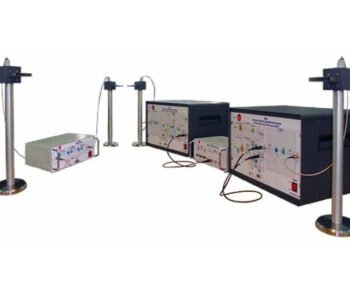
ERA – RADAR UNIT
ERA - RADAR UNIT
General Descriptions
The radar (Radio Detection and Ranging) system is an electronic device used to detect the presence, direction and speed of a target (aerial, terrestrial or maritime). The radar device is a main component in many systems of navigation, air traffic control, meteorological monitoring, military surveillance, astronomy, etc.
The radar sends a high frequency signal pulses and detects the reflected signal (echo) from a radar target in the detection zone.
The Radar Unit “ERA” is a radar unit, designed by EDIBON, to study the basic principles about the radar technology.
The ERA unit uses a compact radar which allows students to acquire solid formation about the operation, configuration and installation of a radar system without any previous knowledge. In addition to this, ERA unit allows students to operate and manage a professional radar system.
Students will be able to know different radar concepts such as radar antenna, range and bearing measurement, rain suppressor, sensitivity control, guard zone, etc.
This unit is fully provided with a set of practices, that has to be done at the outdoor, that allow students to understand how works the radar technology and allows the student to learn, in a simple and practical way, the terms and concepts used in radar system such as distance measurements of static and moving objects, operation modes, sensitivity control, suppressing clutters, communication with the GPS module, etc.
The ERA unit consists of different elements: interface unit, radar antenna, GPS module, extendable tripod stands and mobile cart.
Interface unit: It contains the display and the radar control system. The interface unit is the main element of the ERA unit and controls and shows the information provided by the outdoor devices: the radar antenna and the GPS module. It contains the display unit that shows all the navigation data and the radar PPI (Plan Position Indicator). The display unit also includes the buttons to configure the many options of the radar system (setting alarms, sensitivity adjustment, suppressing the clutter, etc). The interface unit includes a battery with a battery charger to facilitate the outdoor operation of the unit. The interface unit also includes two indicator led to show the battery status and the connectors to the GPS module and the radar antenna in the front panel. Radar Antenna: It contains the directional antenna, the microwave generator and the microwave receiver. The directional antenna can rotate to scan the horizontal plane. It also includes a connection cable to the interface unit, with approximately10 m. of long, which allows the users to place the radar antenna at safe distance from the interface unit. The radar antenna is mounted on an extendable tripod stand which hold the antenna at an appropriate height. The radar antenna has to be placed at outside of the laboratory in a large and open area. GPS module: It is a device that shows the current location, altitude, speed and UTC time information anywhere on the earth using the Global Positioning System (GPS). The GPS module includes a cable to connect to the interface unit, for power supply of the GPS module and communicating with the display unit. Extendable tripod stands: Extendable tripod stand to hold the radar antenna at appropriate height. The tripod stand contains a bull’s eyelevel for the radar antenna leveling in uneven grounds. Mobile cart: It is a mobile structure to hold the elements of the ERA unit. It allows user to operate with the ERA unit at the outdoor. The mobile cart incorporates wheels (strong tires) to facilitate its mobility and the operation in uneven grounds.
GUIDED PRACTICAL EXERCISES INCLUDED IN THE MANUAL
- Familiarization with the unit.
- Establish communication with GPS module.
- Configuration of the radar range.
- Sensitivity adjustment.
- Range measurement.
- Bearing measurement.
- Setting of the suppressing interference function.
- Setting of the suppressing rain clutter function.
- Analysis of the guard alarm function and establish a guard zone.
- Analysis of the watchman function.





